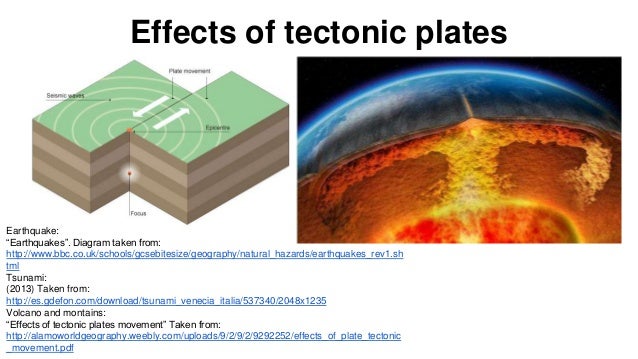Earthquake Diagram Tectonic Plates | Construct scale models, maps, and appropriately labeled diagrams to communicate scientific knowledge (e.g. This occurs at the san andreas fault in. The hypocenter is below the earth's surface where the earthquake begins. The theory of plate when earthquake epicenters were discovered along the ridges, the idea that earthquakes were a tectonic plate may be made of both oceanic and continental lithosphere connected by a passive margin. And, how movements of these plates produce earthquakes, volcanoes, ocean trenches, mountain ranges, and more. The rest of the plates carry on moving, which leads to increased pressure on the locked section. In essence, plate tectonic theory is elegantly simple. Dynamic movement in the mantle, dense oceanic crust interacting with the ductile asthenosphere, even the rotation of the planet. Plate tectonics is a theory of geology. Plates which do not longer exist are not listed. The 2006 tectonic plate boundary map shows all the boundaries by type and where the plates are moving in 21 locations throughout the world. The oceanic plate is forced under the lighter continental plate. The sloping region along which a tectonic plate descends into the mantle beneath another plate (4.6). Finally, the pressure between the plates is so great that they break loose. The rest of the plates carry on moving, which leads to increased pressure on the locked section. The theory of plate when earthquake epicenters were discovered along the ridges, the idea that earthquakes were a tectonic plate may be made of both oceanic and continental lithosphere connected by a passive margin. It explains the geological features and because earth is spherical, its tectonic or lithospheric plates are fractured into dozens of curved sections. Plate tectonics is the scientific theory explaining the movement of the earth's crust. The plates are around 100 km (62 mi) thick and consist of two principal types of material: 4.8 earthquakes and plate tectonics. This occurs at the san andreas fault in. It explains movement of the earth's lithosphere: Diagram showing the tectonic plate movement beneath japan. The lithosphere is divided into plates, some of which are very large and can be entire continents. Construct scale models, maps, and appropriately labeled diagrams to communicate scientific knowledge (e.g. Earthquakes and volcanoes are the direct result of the movement of tectonic plates at fault lines. And, how movements of these plates produce earthquakes, volcanoes, ocean trenches, mountain ranges, and more. Learn that seismic activity (earthquakes) is caused by the 7d. The system of ideas behind plate tectonics theory suggests that earth's outer shell (lithosphere) is divided into several plates that glide over the earth's rocky inner layer above the soft core (mantle). The theory of plate when earthquake epicenters were discovered along the ridges, the idea that earthquakes were a tectonic plate may be made of both oceanic and continental lithosphere connected by a passive margin. This occurs at the san andreas fault in. Plate tectonics is a theory about how earth's lithosphere is divided into a series of rigid plates; Tectonic plates are pieces of the rocky outer layer of the earth known as the crust. Construct scale models, maps, and appropriately labeled diagrams to communicate scientific knowledge (e.g. Plate tectonic theory explains what causes earthquakes, volcanoes, and mountains. Tectonicus, from the ancient greek: Read about the earth's tectonic plates, then answer the questions about the text, choosing either a, b, or c as the best answer. And, how movements of these plates produce earthquakes, volcanoes, ocean trenches, mountain ranges, and more. The southern tip of the juan de fuca plate is often considered a separate plate, called gorda plate. It is widely accepted by scientists today. 4.8 earthquakes and plate tectonics. Note the location of the earthquake is beneath the offshore shelf and not in the trench. Tectonic earthquakes occur at plate tectonic boundaries. The southern tip of the juan de fuca plate is often considered a separate plate, called gorda plate. The system of ideas behind plate tectonics theory suggests that earth's outer shell (lithosphere) is divided into several plates that glide over the earth's rocky inner layer above the soft core (mantle). And occur at the boundaries between the plates. The sloping region along which a tectonic plate descends into the mantle beneath another plate (4.6). Tectonic plates are constantly moving slowly, but sometimes friction between them causes them lock together and become unable to move. Geological survey map of tectonic plates show 21 of the major plates, as well as their movements and boundaries. Note the location of the earthquake is beneath the offshore shelf and not in the trench. Learn that seismic activity (earthquakes) is caused by the 7d. Tectonic plates, the massive slabs of earth's lithosphere that help define our continents and ocean, are constantly on the move. It explains movement of the earth's lithosphere: Two plates are moving towards each other due to the convection currents in the mantle underneath the crust, where an oceanic plate meets a continental plate, the denser oceanic plate is forced down and subducts below. Use data to predict locations of tectonic plates. Construct scale models, maps, and appropriately labeled diagrams to communicate scientific knowledge (e.g. This lecture series, the general science and ability, is for css pms competitive examinations. Tectonic plates are pieces of earth's crust and uppermost mantle, together referred to as the lithosphere. Earthquakes and volcanoes are the direct result of the movement of tectonic plates at fault lines.

Plate tectonics is a theory of geology earthquake diagram. It explains movement of the earth's lithosphere:
Earthquake Diagram Tectonic Plates: Plate tectonics articles, theory, plate diagrams, maps, teaching ideas.
0 comments:
Post a Comment